Where Is The Universal Media Server Service Installed
A media server is just a specialized file server or calculator system for storing media (digital videos/movies, sound/music, and images) that can be accessed over a network.
In lodge to set up a media server, yous need computer hardware (or mayhap a cloud server) as well as software that enables y'all to organize your media files and makes information technology easier to stream and/or share them with friends and family.
[ You might also like: sixteen Open Source Deject Storage Software for Linux ]
In this article, we will share with yous a list of the ten best media server software for Linux systems. By the time you complete this article, y'all will be able to choose the most appropriate software to prepare your home/role/cloud media server powered by a Linux system.
ane. Kodi – Habitation Theater Software
Kodi (previously known as XBMC) is a free and open-source, highly customizable media server software. It is cantankerous-platform and runs on Linux, Windows, macOS; iOS, and Android. It is more than just a media server; it's an ideal entertainment heart software with a fabulous user interface and several other media server software appliances are based on it.
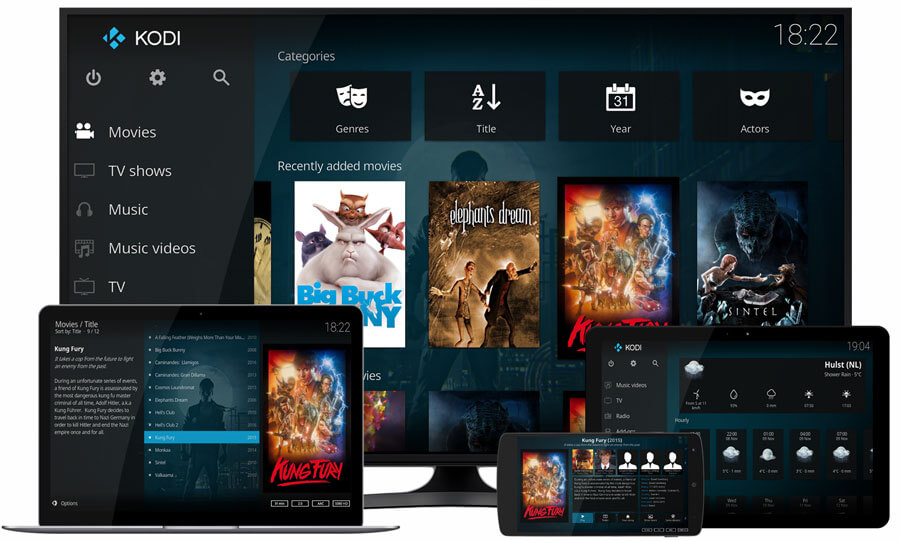
Kodi enables yous to play movies/videos, music/audio, podcasts, view images, and other digital media files from your local computer or a network server as well equally the internet.
Kodi Features:
- Runs on a wide variety of devices.
- It is user-friendly.
- Supports a spider web interface.
- Supports a variety of user-created Add-ons.
- Supports televisions and remote controls.
- Has a highly configurable interface via skins.
- Allows yous to lookout man and record live TV.
- Supports importing pictures into a library.
- Allows you lot to browse, view, sort, filter, or fifty-fifty start a slideshow of your pictures and much more.
How to Install Kodi in Linux
To install Kodi on Ubuntu-based distributions, apply the following PPA to install the latest version.
$ sudo apt-become install software-backdrop-mutual $ sudo add together-apt-repository ppa:team-xbmc/ppa $ sudo apt-get update $ sudo apt-get install kodi
To install Kodi on Debian, employ the post-obit control, as Kodi is available in the default "principal" Debian repository.
$ sudo apt-get update $ sudo apt-go install kodi
To install Kodi on Fedora use pre-built RPMFusion packages every bit shown.
$ sudo dnf install --nogpgcheck \ https://download1.rpmfusion.org/free/fedora/rpmfusion-gratuitous-release-$(rpm -Due east %fedora).noarch.rpm $ sudo dnf install kodi
ii. PLEX – Media Server
Plex is a powerful, secure and fully-featured, and easy-to-install media server software. It runs on Linux, Windows, macOS, and many other platforms.

It supports well-nigh all major file formats and allows you to organize your media in a fundamental point for piece of cake access. Plex has an easy-to-navigate interface, and a collection of useful apps for a variety of devices: phones, tablets, gaming consoles, streaming devices, and smart TVs.
Plex Features:
- Supports encrypted connections with multiple user accounts.
- Allows you lot to easily pick and choose what to share.
- Offers parental control functionality.
- Supports mobile sync which offers offline access to your media files.
- Supports flinging of video from one device to some other.
- Also supports deject sync.
- Supports sound fingerprinting and automated photo-tagging.
- Has a media optimizer and much more than.
How to Install Plex in Linux
To install Plex in Ubuntu, Fedora, and CentOS distributions, become to the Download department and cull your Linux distribution architecture (32-bit or 64-bit) to download DEB or RPM package and install it using your default packet managing director.
iii. Subsonic – Personal Media Streamer
Subsonic is a secure, reliable, and easy-to-use personal media server and streamer. It runs on Linux, Windows, macOS, and Synology NAS. Information technology is very customizable and supports all major media formats. There are more than 25 supported apps that yous tin can utilise to stream music straight on your mobile phone.
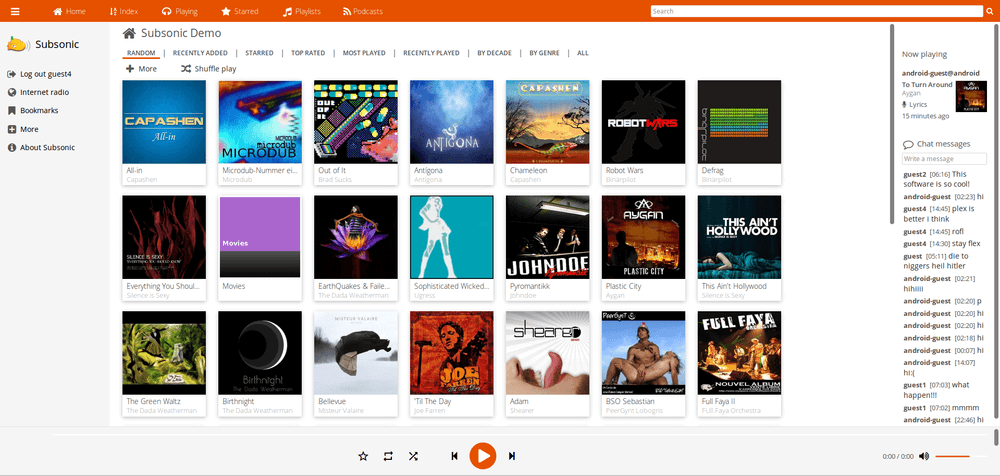
Subsonic tin operate with multiple users and whatever number of players at the same time. And it allows you lot to play movies/videos or music/audio files on whatever compatible DLNA/UPnP devices.
Subsonic Features:
- Has a highly configurable UI (user interface).
- Supports secure connections over HTTPS/SSL.
- Integrates with the best web services.
- Supports upwardly to 28 languages and comes with 30 different themes.
- Offers conversation features.
- Allows yous to access your server using your ain address i.e https://yourname.subsonic.org.
- Supports authentication in LDAP and Active Directory.
- Has an integrated podcast receiver.
- Supports setting upload and download bandwidth limits and lots more.
How to Install Subsonic in Linux
To install Subsonic in Debian/Ubuntu and Fedora/CentOS distributions, you need to kickoff install Java 8 or Java nine using the following commands on your respective distributions.
------------- Install Coffee in Debian and Ubuntu ------------- $ sudo apt install default-jre ------------- Install Java in Fedora and CentOS ------------- # yum install java-eleven-openjdk
Next, get to the Subsonic Download section to take hold of the .deb or .rpm package and install it using your default package director.
$ sudo dpkg -i subsonic-x.x.deb [On Debian/Ubuntu] $ sudo yum install --nogpgcheck subsonic-x.ten.rpm [On Fedora/CentOS]
4. Madsonic – Music Streamer
Madsonic is an open-source, flexible, and secure web-based media server and media streamer developed using Java. Information technology runs Linux, macOS, Windows, and other Unix-like systems. If you are a developer, at that place is a gratuitous REST API (Madsonic API) that you lot utilise to develop your own apps, addons, or scripts.
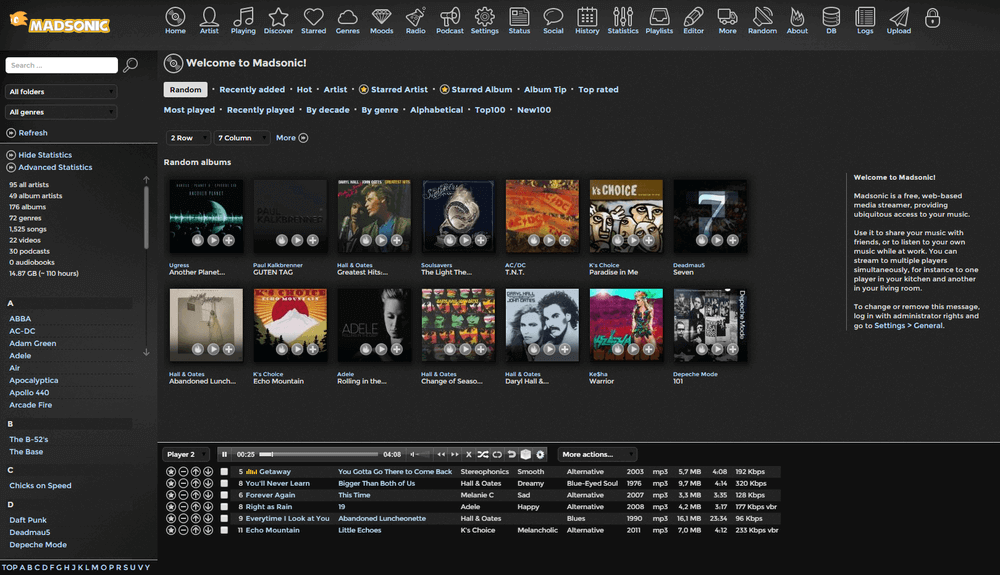
Madsonic Features:
- Easy to use and comes with jukebox functionality.
- Information technology is highly flexible and scalable with an intuitive web interface.
- Offers search and alphabetize functionalities with Chromecast support.
- Has built-in support for your Dreambox receiver.
- Supports hallmark in LDAP and Agile Directory.
How to Install Madsonic in Linux
To install Madsonic in Debian/Ubuntu and Fedora/CentOS distributions, you lot need to first install Coffee 8 or Java 9 using the following commands on your respective distributions.
------------- Install Java in Debian and Ubuntu ------------- $ sudo apt install default-jre ------------- Install Coffee in Fedora and CentOS ------------- # yum install coffee-xi-openjdk
Next, get to the Madsonic Download section to take hold of the .deb or .rpm bundle and install it using your default package manager.
$ sudo dpkg -i Madsonic-x.ten.xxxx.deb [On Debian/Ubuntu] $ sudo sudo yum install --nogpgcheck Madsonic-x.x.xxxx.rpm [On Fedora/CentOS]
5. Emby – Open Media Solution
Emby is a powerful, like shooting fish in a barrel-to-utilize, and cross-platform media server software. Merely install the emby server on your motorcar running Linux, FreeBSD, Windows, macOS, or on NAS. You can also grab the emby app on Android, iOS, Windows or run the spider web client from a browser or still use the emby Tv set app.
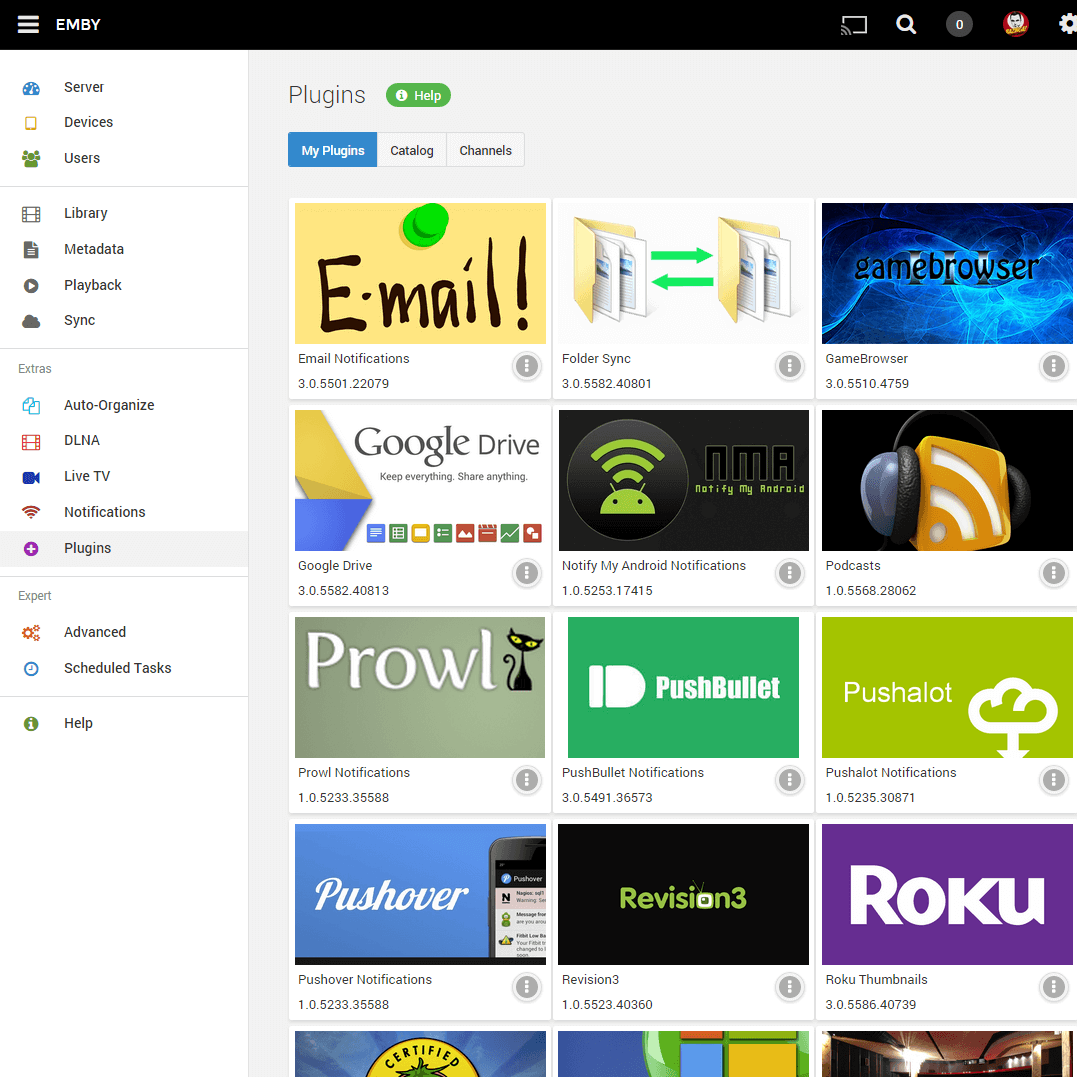
In one case you have it, it will help you lot manage your personal media libraries, such as domicile videos, music, photos, and many other media formats.
Emby Features:
- A cute UI with supports for mobile sync and deject sync.
- Offers powerful web-based tools for managing your media files.
- Supports parental command.
- Information technology automatically detects DLNA devices.
- Enables easy sending of movies/videos, music, pictures, and live TV shows to Chromecast and much more than.
How to Install Emby in Linux
To install Emby in Ubuntu, Fedora, and CentOS distributions, get to the Emby Download section and choose your Linux distribution to download DEB or RPM package and install it using your default package manager.
half-dozen. Gerbera – UPnP Media Server
Gerbera is a costless open source, powerful, flexible, and full-featured UPnP (Universal Plug and Play) media server. It comes with a elementary and intuitive spider web user interface for easily configuring your web server.
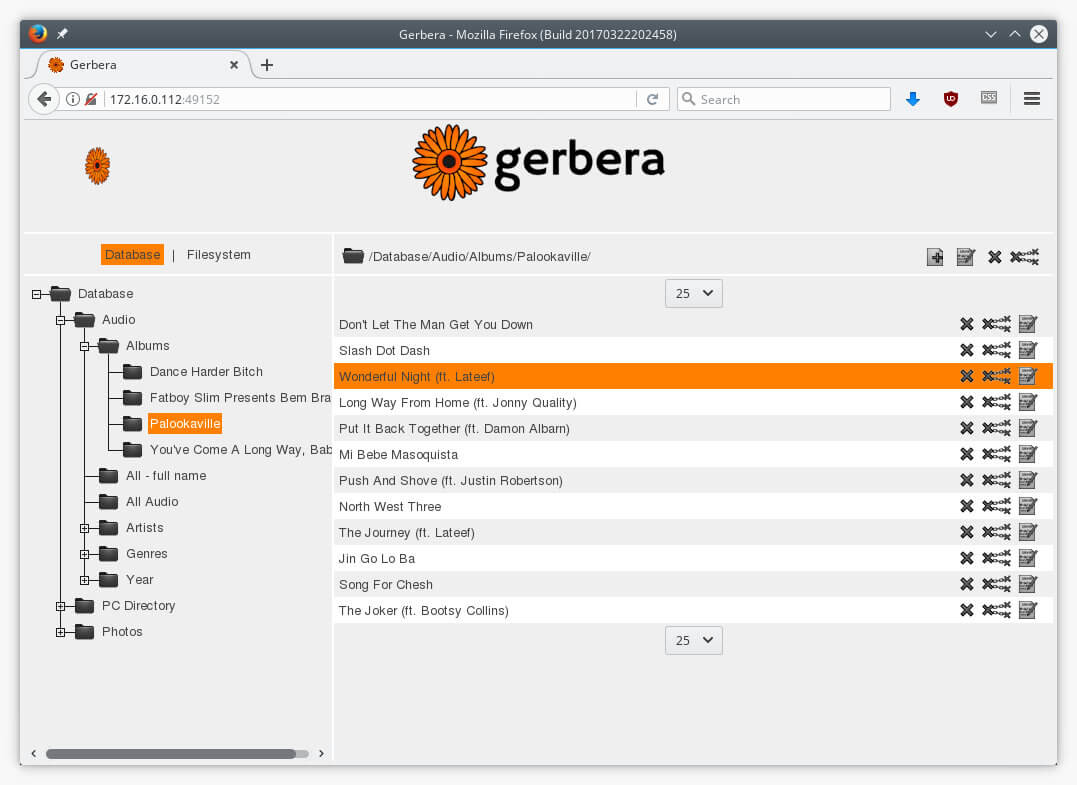
Gerbera has a highly flexible configuration, allowing you to command the behavior of various features of the server. It allows you to browse and playback media via UPnP.
Gerbera Features:
- It is like shooting fish in a barrel to set up.
- Supports metadata extraction from mp3, ogg, FLAC, jpeg, etc. files.
- Supports user-defined server layout based on extracted metadata.
- Support for ContentDirectoryService container updates.
- Comes with Exif thumbnail support.
- Supports automated directory rescans (timed, inotify).
- Offers a nice Web UI with a tree view of the database and the file system, allowing to add together/remove/edit/scan media.
- Back up for external URLs (create links to internet content and serve them via UPnP to your renderer).
- Supports flexible media format transcoding via plugins/scripts and much more.
How to Install Gerbera in Linux
To install Gerbera in Ubuntu, Fedora, and CentOS distributions, follow our installation guide that explains the installation of Gerbera – UPnP Media Server in Linux and likewise shows how to stream media files using Gerbera on your dwelling network.
Alternatively, you can install Gerbera in Linux distributions using:
------------- Install Gerbera in Debian and Ubuntu ------------- $ sudo add-apt-repository ppa:stephenczetty/gerbera-updates $ sudo apt-get update $ sudo apt install gerbera ------------- Install Gerbera in Fedora, CentOS and RHEL ------------- $ sudo dnf install gerbera
7. Red5 Media Server
Red5 is an open-source, powerful, and multi-platform media streaming server for streaming live audio/video, recording client streams (FLV and AVC+AAC), remote object sharing, data synchronization, and much more. It is developed to exist flexible with an effortless plugin architecture that offers customization for any live streaming scenario.
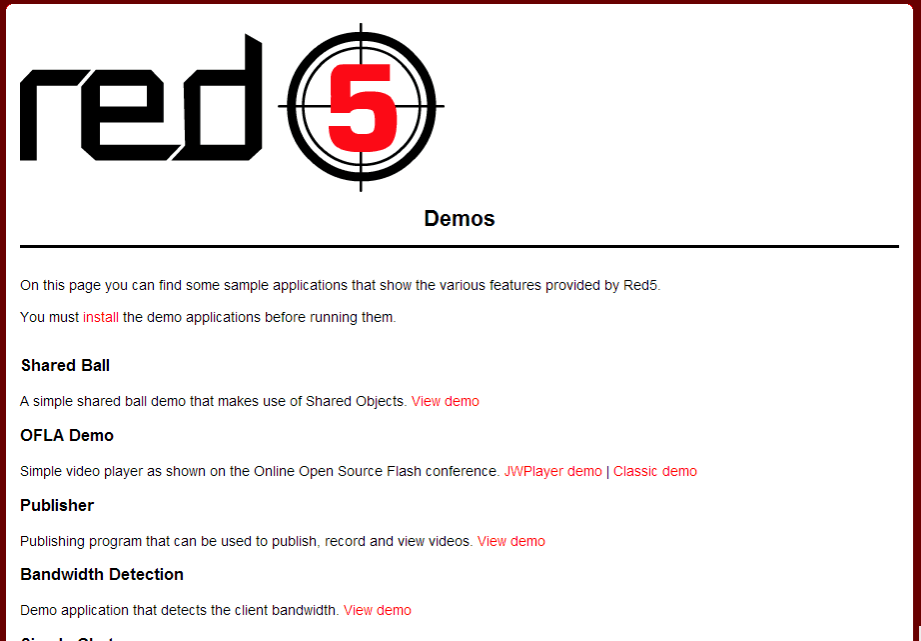
How to Install Red5 in Linux
To install Red5 in Linux, follow the installation instructions on Github to become started with the server.
viii. Jellyfin
Jellyfin is an open-source and gratis media streaming system that enables y'all to control and manage the stream of your media. It is an culling to Emby and Plex, which offers media streaming from a dedicated server to end-user devices through multiple applications.
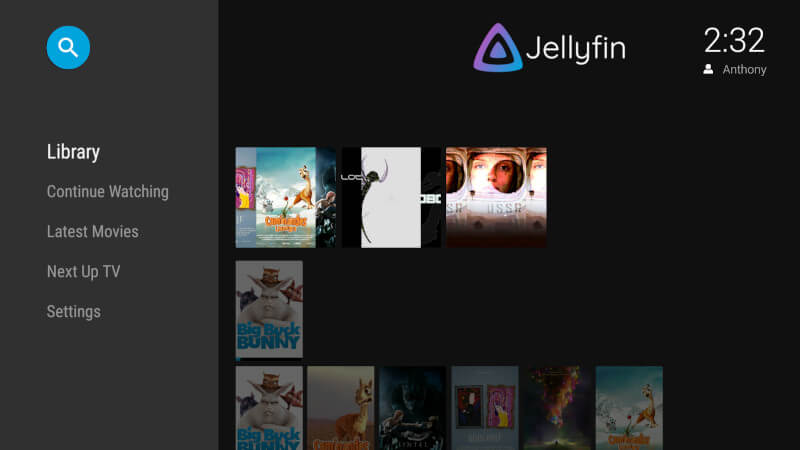
How to Install Jellyfin in Linux
Install Jellyfin via Apt repository in Debian-based distributions.
$ sudo apt install apt-transport-https $ wget -O - https://repo.jellyfin.org/jellyfin_team.gpg.key | sudo apt-central add - $ echo "deb [arch=$( dpkg --print-architecture )] https://repo.jellyfin.org/$( awk -F'=' '/^ID=/{ print $NF }' /etc/os-release ) $( awk -F'=' '/^VERSION_CODENAME=/{ print $NF }' /etc/os-release ) principal" | sudo tee /etc/apt/sources.list.d/jellyfin.list $ sudo apt update $ sudo apt install jellyfin For other Linux distributions, go to the Jellyfin download page and follow the installation instructions.
9. Universal Media Server
Universal Media Server is a DLNA-compatible UPnP media solution that created equally a fork of PS3 Media Server. Information technology enables you to stream media files to a wide range of devices that includes TVs, smartphones, gaming consoles, computers, audio receivers, and Blu-ray players.
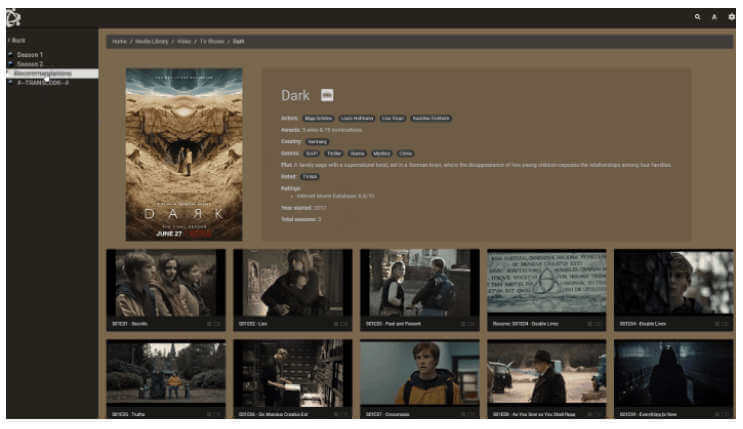
How to Install Universal Media Server in Linux
To install UMS in Linux, yous need to download UMS tarball and compile it from the source.
10. LibreELEC – Open Embedded Linux Amusement Center
LibreELEC is a lightweight Linux-based operating arrangement for setting up your machine every bit a media server using Kodi. It is built from scratch for the sole purpose of running Kodi media server software.
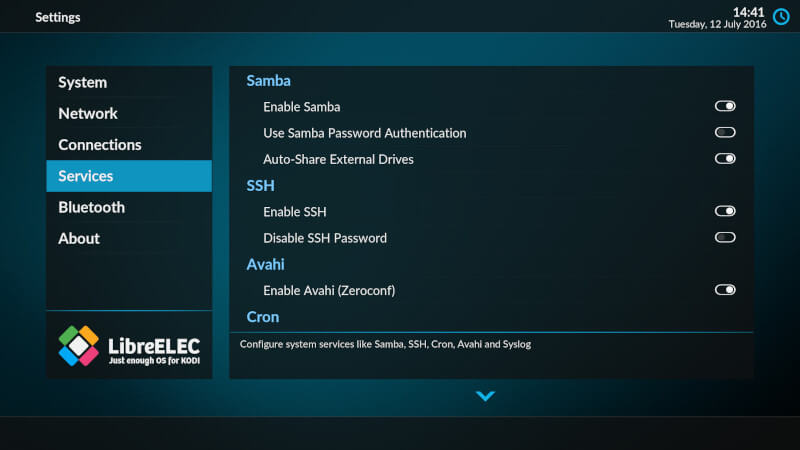
It allows you to organize your picture show collections; offers you a picture browser, music and audiobook player, TV and personal video recorder, and a TV bear witness direction functionality. It is highly extensible through a great number of addons.
OpenELEC Features
- Organize your movie collections and play your media with relevant info, subtitles, and fanart.
- Manually sentinel all your photos or use a handy slide show with a zoom effect.
- Browe, spotter and record your favorite TV channels.
- Manage your TV serial and keep track of your favorite episodes.
- Listen to audio files in various formats with artists' photos and anthology covers.
- Easy expandable with Addons.
How to Install LibreELEC in Linux
As we said, LibreELEC is a small Linux-based operating arrangement congenital from scratch as a platform to plow your calculator into a Kodi media center. To install it, go to the LibreELEC download section and cull your Linux distribution to download DEB or RPM bundle, and install information technology using your default package manager.
11. OSMC – Open Source Media Heart
OSMC is a free open up source, uncomplicated, easy-to-use, full-featured media server software and media streamer for Linux. It is based on the Kodi media server software. It supports all well-known media formats and a variety of sharing protocols. In addition, information technology comes with a remarkable interface. Once you have installed it, you lot get easy updates and apps to employ.
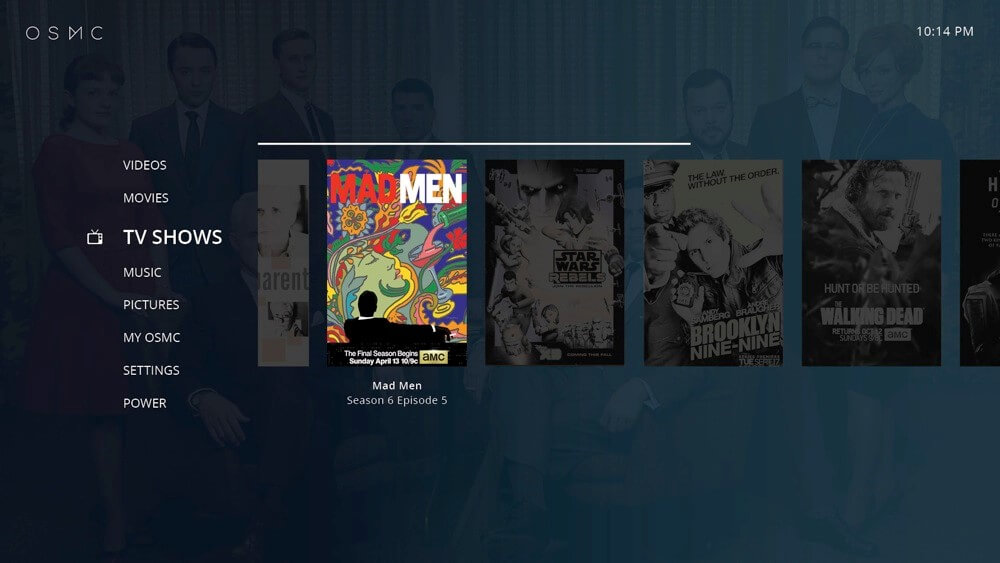
How to Install OSMC in Linux
To install OSMC in Debian/Ubuntu, Fedora, and RHEL/CentOS distributions, starting time go to the OSMC release department and download compiled version of OSMC, and install information technology.
12. Ampache
Ampache is an open-source audio and video streaming media server and file manager that enables you to host and manage your own audio/video collection on your server. It can stream your music and videos to your figurer, smartphone, smart TV, or tablet using Ampache's web interface from anywhere using an internet connection.
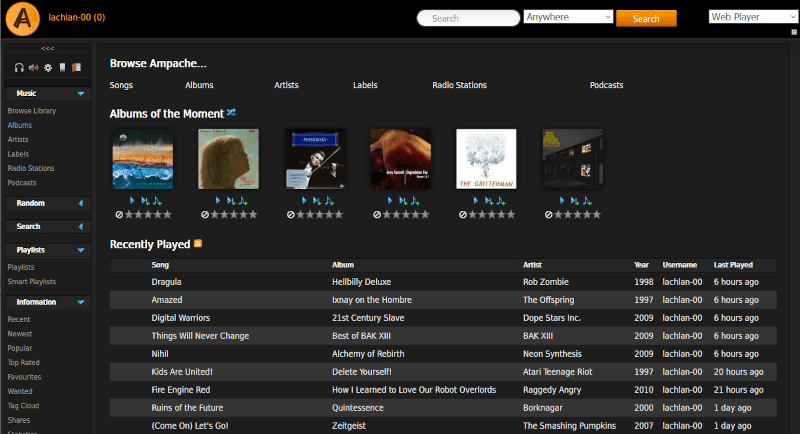
For Ampache installation, delight visit the wiki folio.
13. Tvmobili – Smart Goggle box Media Server [Discontinued]
Tvmobili is a lightweight, high-functioning, cross-platform media server software that runs on Linux, Windows, and macOS; NAS too as embedded/ARM devices. It is like shooting fish in a barrel to install and in add-on, tvmobili is fully integrated with iTunes and offers amazing support for total 1080p High Definition (Hard disk) videos.
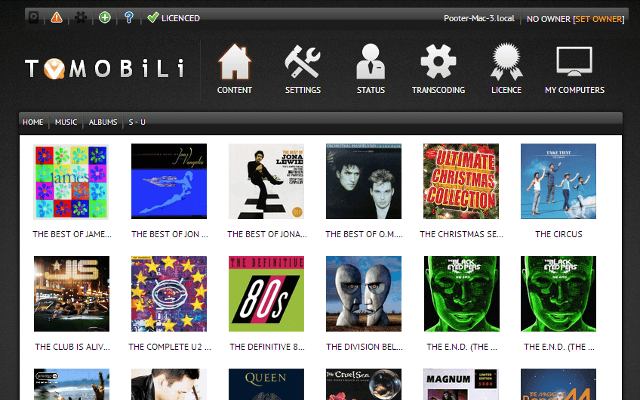
Tvmobili Features:
- Easy to install, high-performance media server.
- Fully integrated with iTunes (and iPhoto on Macs).
- Supports full 1080p High Definition (HD) video.
- Lightweight media server.
How to Install Tvmobili in Linux
To install Tvmobili in Ubuntu, Fedora, and CentOS distributions, go to the Tvmobili Download department and cull your Linux distribution to download DEB or RPM parcel and install it using your default parcel manager.
fourteen. OpenFlixr – Media Server [Discontinued]
OpenFlixr is a virtual, flexible, energy-efficient, and fully automated media server software. It uses several other applications to achieve its overall functions, including Plex as a media server (to organizes movies, serial, music, and pictures and streams them), Ubooquity for serving comics and ebooks, and a web-based reader. It supports automated downloading and serving of media, encrypted connections, and smart auto-updating.
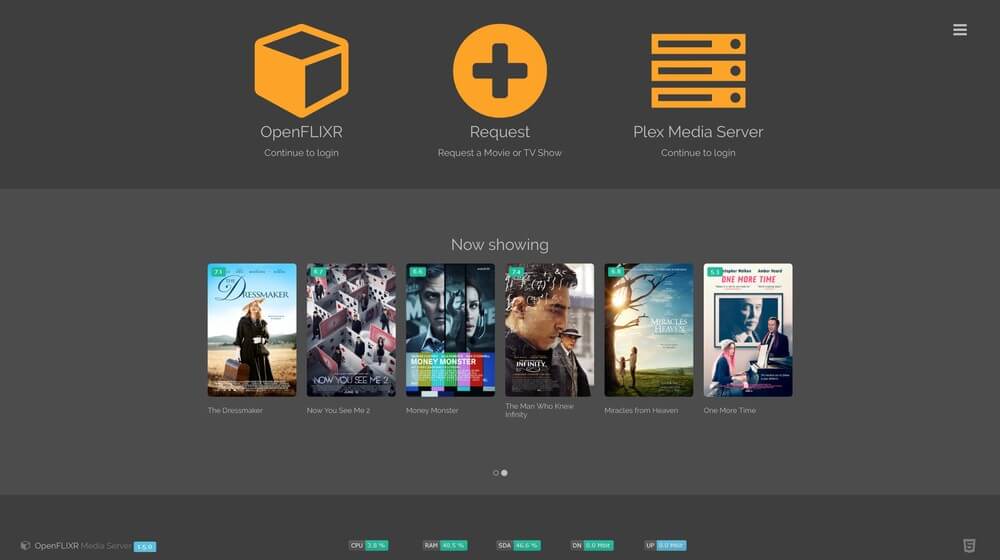
How to Install OpenFLIXR in Linux
To install OpenFLIXR, the only matter you need is visualization software such every bit VirtualBox, KVM, Vmware, etc.
Once you lot take visualization software installed, Download OpenFLIXR and and then import in the hypervisor, ability on, and let it sit back for a couple of minutes till installation finishes, after that get to http://IP-Accost/setup to setup OpenFLIXR.
Conclusion
In this commodity, we shared with you some of the all-time media server software for Linux systems. If you know any media server software for Linux missing in the list above, just hit us up via the feedback form beneath.
Where Is The Universal Media Server Service Installed,
Source: https://www.tecmint.com/best-media-server-software-for-linux/
Posted by: kwonfordlbeatink.blogspot.com


0 Response to "Where Is The Universal Media Server Service Installed"
Post a Comment